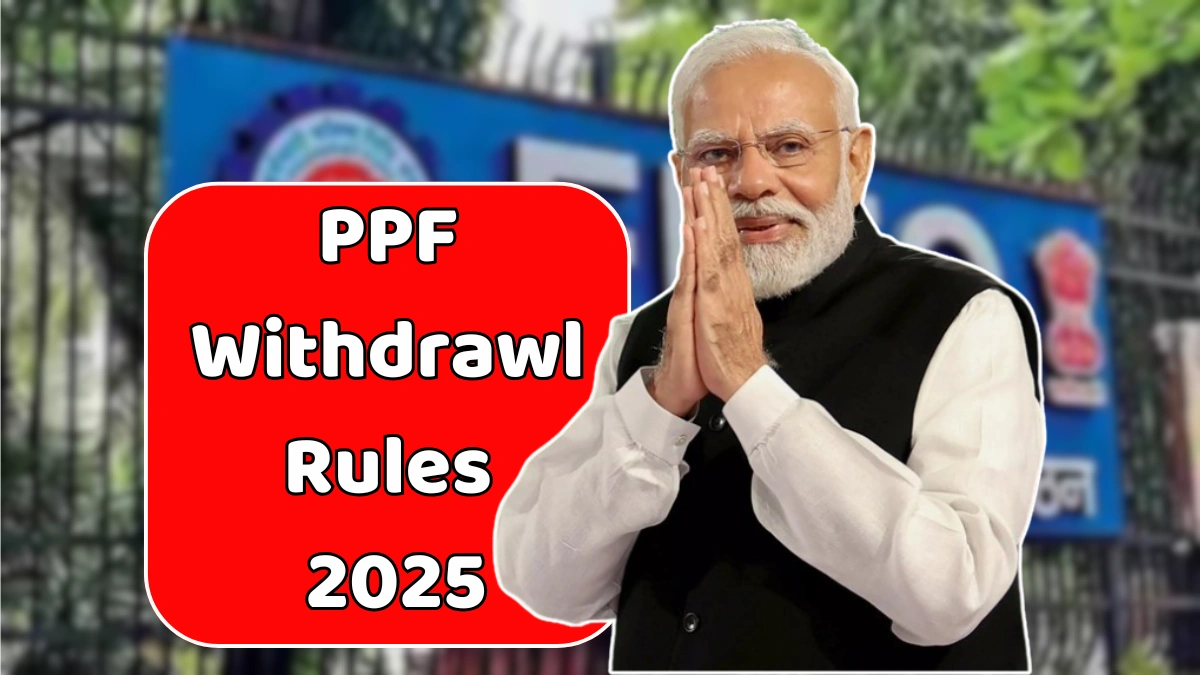Imagine steadily building a financial safety net for years — and finally having the freedom to use it without guilt or penalty. That’s the enduring promise of the Public Provident Fund (PPF), India’s most trusted long-term savings instrument.
For the fiscal year 2025–26, the government has retained its 7.1% annual interest rate, compounded quarterly, reaffirming the PPF’s place as a secure, tax-free investment for millions of savers. But alongside stability, 2025 also brings new withdrawal updates that make this classic scheme even more flexible.
Let’s explore how these changes — from partial withdrawals to full maturity benefits — empower you to plan, save, and withdraw wisely.
Full Maturity: Your Gateway to Total Access
After 15 years of disciplined saving, your PPF account reaches full maturity — unlocking complete, tax-free access to your accumulated balance.
Thanks to compound growth, the maturity corpus often exceeds expectations. For example, if you invest ₹1.5 lakh annually at 7.1% interest, you could build a corpus of over ₹50 lakh by the end of 15 years.
Post-maturity options include:
- Withdraw the full amount, completely tax-free.
- Extend the account in blocks of five years (with or without fresh contributions).
- Close anytime during an extended period if funds are needed.
However, Non-Resident Indians (NRIs) cannot extend their accounts beyond maturity and must withdraw the full balance upon completion.
This stage rewards patient investors who’ve let compounding quietly transform their savings into retirement-ready wealth.
Partial Withdrawals: Flexibility After Five Years
Need cash for an emergency or major expense? The PPF’s partial withdrawal facility offers flexibility without derailing your long-term goals.
Starting after five full financial years from account opening, you can withdraw up to 50% of the lower balance between:
- The amount at the end of the fourth financial year, or
- The amount at the end of the previous financial year.
Key points:
- One withdrawal per financial year is allowed.
- The withdrawal amount will be adjusted for any outstanding loans.
- The process is simple and paperless, with withdrawals now easier for education, health, or emergencies.
This feature strikes a perfect balance — ensuring liquidity for life’s surprises without compromising your long-term financial discipline.
Premature Closure: Limited Access with Safeguards
Premature closure remains a last-resort option, permitted only after five years from account opening under specific conditions:
- Serious illness of self, spouse, or children.
- Higher education expenses.
- Change in residency status to NRI.
A 1% interest penalty applies on the total interest earned, calculated from the account’s opening date until closure. To apply, you’ll need to submit Form-2 along with supporting medical or educational documents at your bank or post office.
This rule ensures the integrity of long-term savings while allowing relief during genuine emergencies.
Extensions: Continue the Growth Beyond 15 Years
When your PPF matures, the benefits don’t have to end. You can extend your account in 5-year blocks, either with or without fresh contributions.
Two extension modes:
- With Contributions: Continue annual deposits (up to ₹1.5 lakh) and enjoy full withdrawals at the end of each 5-year block.
- Without Contributions: Skip further deposits but withdraw up to 60% of the balance at the start of each extension, once per year.
And starting July 27, 2025, e-KYC and instant online renewal are available — making the extension process faster and completely digital.
This feature is ideal for retirees or conservative investors who want continued tax-free compounding without opening a new account.
Tax Benefits: Triple Exemption, Maximum Efficiency
The biggest strength of the PPF remains its EEE (Exempt-Exempt-Exempt) status:
- Investment: Eligible for deduction under Section 80C (up to ₹1.5 lakh per year).
- Interest: Completely tax-free, with no TDS.
- Withdrawals: 100% exempt from tax — even in partial or premature cases.
At a time when fixed deposits are taxed on interest, PPF’s tax-free compounding offers higher real returns, especially during inflationary cycles.
PPF Withdrawal Summary 2025
| Withdrawal Type | Eligibility Period | Maximum Limit | Annual Frequency | Penalty / Tax |
|---|---|---|---|---|
| Partial Withdrawal | After 5 years | 50% of lower balance (4th or previous year) | Once per year | None – Tax-free |
| Premature Closure | After 5 years (specific reasons) | Full balance | N/A | 1% interest cut – Tax-free |
| Maturity (15 years) | End of 15th year | Full balance | N/A | None – Tax-free |
| Extension (No Contribution) | After each 5-year block | 60% of opening balance | Once per year | None – Tax-free |
PPF 2025 – More Freedom, Same Security
The PPF withdrawal rules of 2025 offer a rare combination — flexibility, stability, and tax efficiency. Whether you’re saving for education, emergencies, or retirement, PPF gives you control over liquidity without sacrificing growth.
In a world of uncertain markets, the PPF continues to stand tall — steady, government-backed, and tax-free, making it India’s most trusted tool for long-term wealth creation.
Disclaimer: This article is for educational and informational purposes only. Readers should verify final interest rates, forms, and procedural details through the official Ministry of Finance notifications or their respective banks/post offices.






